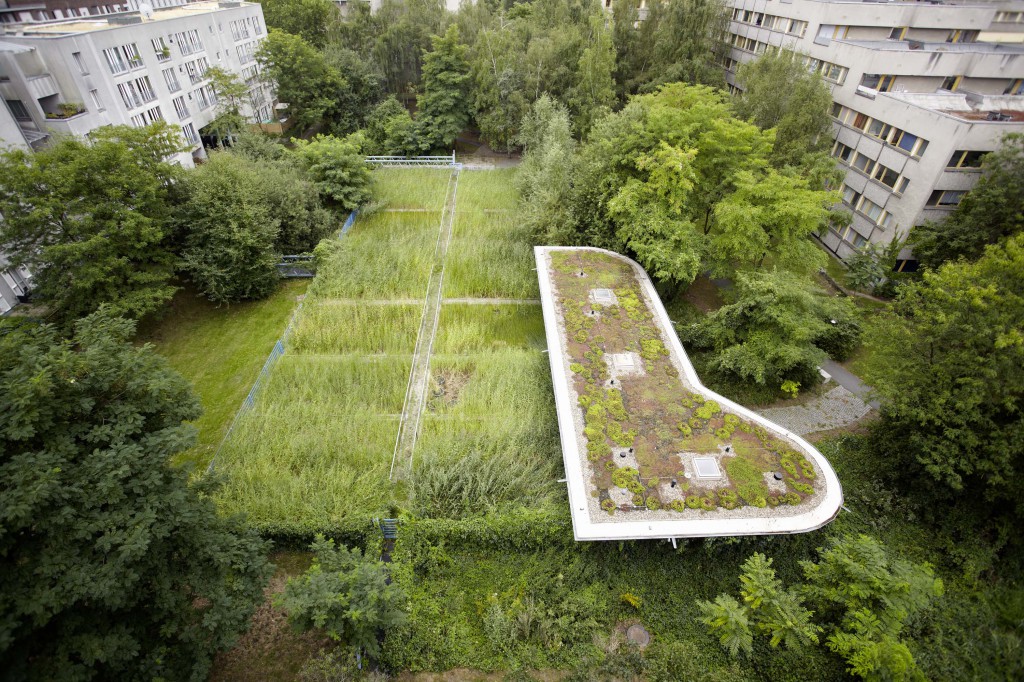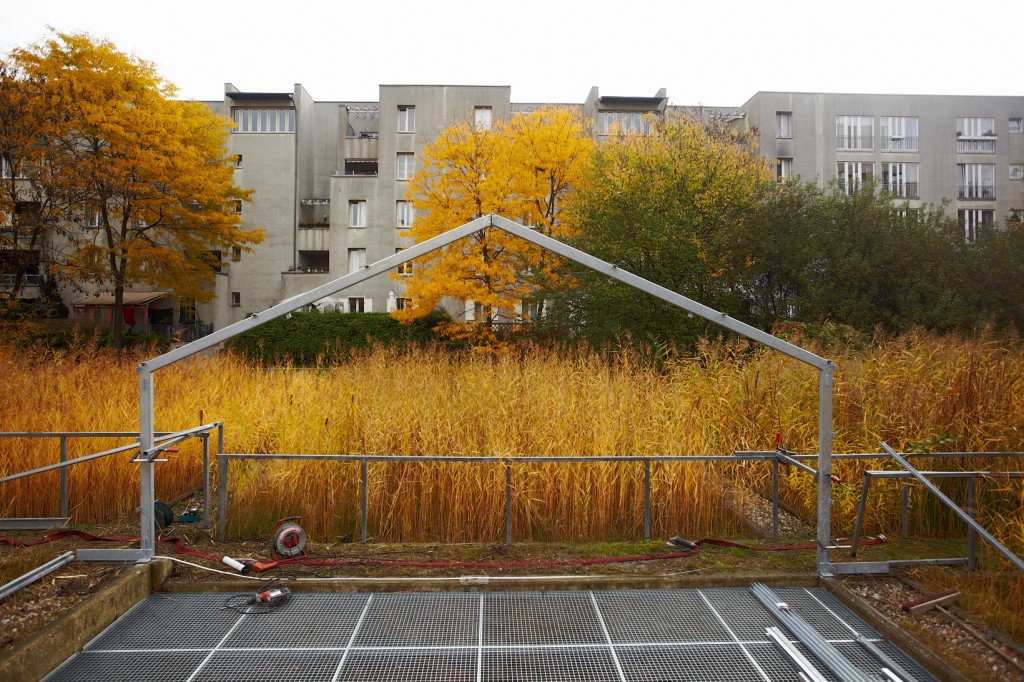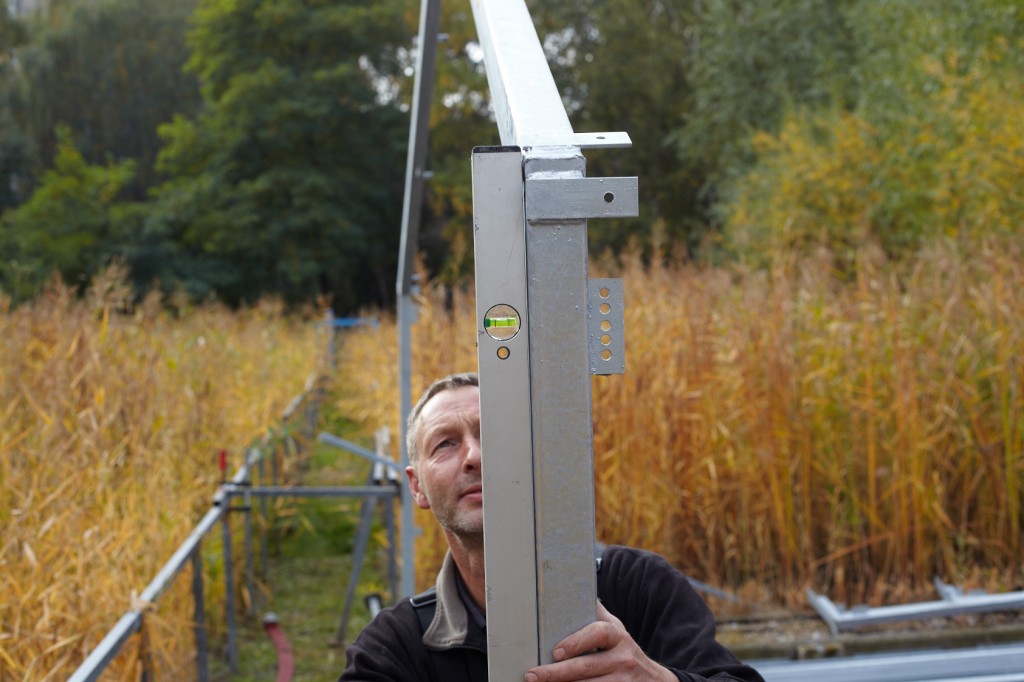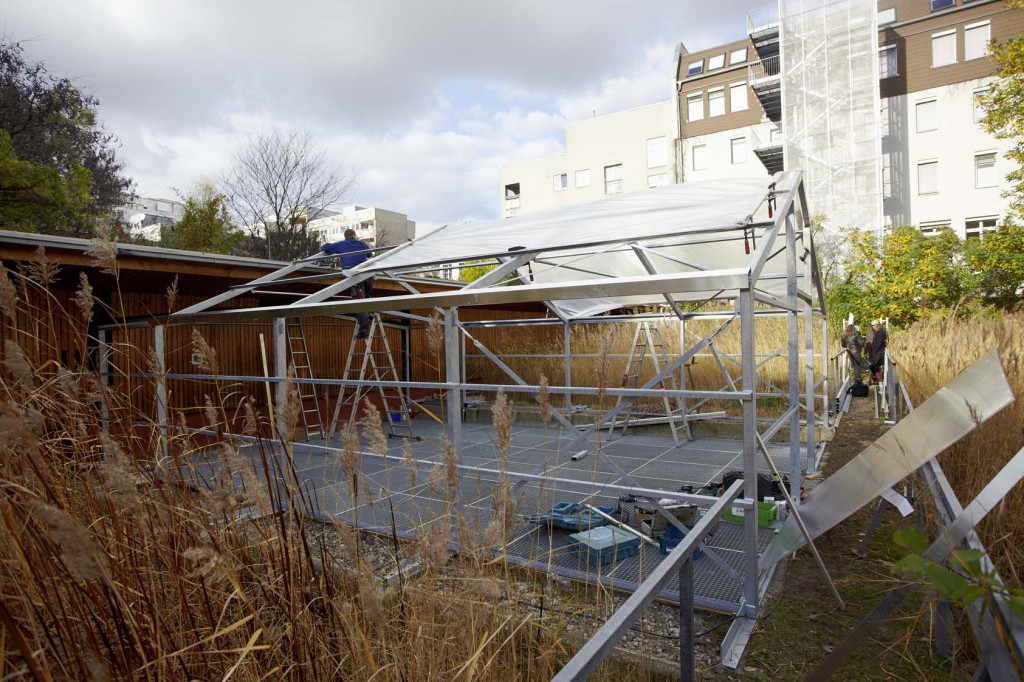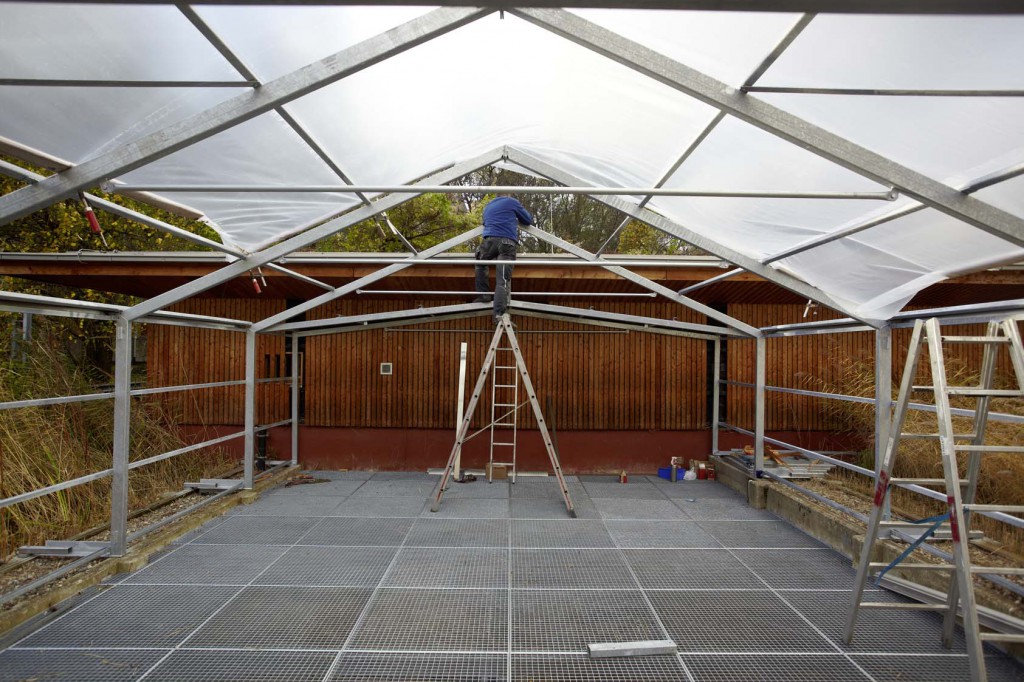1987
The integrated water concept at Block 6 in Berlin-Kreuzberg was originally developed as a project of the International Building Exhibition 1987 as well as a model project of the Experimental Housing and Urban Development (EXWOST) research programme. The model project was financed by Federal and State funds and is a cooperation between the Federal State of Berlin and the plant owner. Research of different ecological building concepts has since then been implemented: Since then domestic wastewater produced by the tenants of Block 6 is separated into the two flows: greywater and blackwater. The comparatively low-nutrient greywater from bathtubs, showers, wash basins and kitchens is separated via a second water supply pipe. It allows the decentralized water treatment and the reclaimed water use for purposes of irrigation and open space design as well as domestic demands.
2006
To optimize the building-related water reuse by making it more viable, the water concept has been re-engineered. The aim of the Federal State of Berlin was, with the consent of the owner, to secure and optimize the plant as a ‘technical monument’. On the foundation of the former polishing pond of the constructed wetland located in the courtyard of Block 6 a water-processing house in eco-friendly timber construction has been built. Therein the greywater of ~ 250 tenants is treated mechanical-biologically towards bathing water quality and reused to flush toilets and irrigate tenant gardens.
Rainwater from 2.350m² of roof surface area and 650 m² of sealed open space is discharged in the original constructed wetland. The microclimate improves via the evaporation by the plants. After heavy rain events excess water can infiltrate time-delayed via an adjacent trough.[1]
2013
In the courtyard of Block 6, we are installing the ROOF WATER-FARM demonstration and test site to further develop the separation and recycling of wastewater flows from the building. The technical components of research become visible and tangible in the water-processing house, with its wastewater treatment system and water-farm greenhouse. These systems include:
- treating and converting greywater into reclaimed water (bathing water quality) including testing of its hygienic quality
- analysing relevant micro-pollutants in the water (pharmaceuticals, e.g. diclofenac, ibuprofen, carbamazepine)
- cultivating of vegetables and fish (hydroponics and aquaponics)
- producing liquid fertilizer out of blackwater for hydroponic plant production.
The demonstration and test site delivers:
- procedural, technical and stable data for the diffusion potential of the ROOF WATER-FARM technology for rooftop greenhouses throughout the city
- data for sustainability assessments and
- reference data to develop models for commercial and non-commercial operation and product marketing.
Construction started in mid-October and we look forward to welcoming you!
